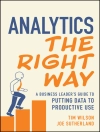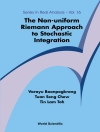R Programming for Actuarial Science
Professional resource providing an introduction to R coding for actuarial and financial mathematics applications, with real-life examples
R Programming for Actuarial Science provides a grounding in R programming applied to the mathematical and statistical methods that are of relevance for actuarial work.
In R Programming for Actuarial Science, readers will find:
* Basic theory for each chapter to complement other actuarial textbooks which provide foundational theory in depth.
* Topics covered include compound interest, statistical inference, asset-liability matching, time series, loss distributions, contingencies, mortality models, and option pricing plus many more typically covered in university courses.
* More than 400 coding examples and exercises, most with solutions, to enable students to gain a better understanding of underlying mathematical and statistical principles.
* An overall basic to intermediate level of coverage in respect of numerous actuarial applications, and real-life examples included with every topic.
Providing a highly useful combination of practical discussion and basic theory, R Programming for Actuarial Science is an essential reference for BSc/MSc students in actuarial science, trainee actuaries studying privately, and qualified actuaries with little programming experience, along with undergraduate students studying finance, business, and economics.
สารบัญ
About the Companion Website xxi
Introduction 1
1 R : What You Need to Know to Get Started 9
2 Functions in R 33
3 Financial Mathematics (1): Interest Rates and Valuing Cashflows 45
4 Financial Mathematics (2): Miscellaneous Examples 63
5 Fundamental Statistics: A Selection of Key Topics — Dr A Kume 87
6 Multivariate Distributions, and Sums of Random Variables 139
7 Benefits of Diversification 147
8 Modern Portfolio Theory 155
9 Duration — A Measure of Interest Rate Sensitivity 171
10 Asset-Liability Matching: An Introduction 177
11 Hedging: Protecting Against a Fall in Equity Markets 187
12 Immunisation — Redington and Beyond 195
13 Copulas 211
14 Copulas — A Modelling Exercise 237
15 Bond Portfolio Valuation: A Simple Credit Risk Model 247
16 The Markov 2-State Mortality Model 259
17 Approaches to Fitting Mortality Models: The Markov 2-state Model and an Introduction to Splines 273
18 Assessing the Suitability of Mortality Models: Statistical Tests 295
19 The Lee-Carter Model 311
20 The Kaplan-Meier Estimator 329
21 Cox Proportionate Hazards Regression Model 339
22 Markov Multiple State Models: Applications to Life Contingencies 351
23 Contingencies I 383
24 Contingencies II 403
25 Actuarial Risk Theory — An Introduction: Collective and Individual Risk Models 447
26 Collective Risk Models: Exercise 473
27 Generalised Linear Models: Poisson Regression 481
28 Extreme Value Theory 501
29 Introduction to Machine Learning: k-Nearest Neighbours (k NN) 513
30 Time Series Modelling in R — Dr A Kume 523
31 Volatility Models — GARCH 551
32 Modelling Future Stock Prices Using Geometric Brownian Motion: An Introduction 571
33 Financial Options: Pricing, Characteristics, and Strategies 585
Index 605
เกี่ยวกับผู้แต่ง
Peter Mc Quire, FIA, is a Lecturer in Actuarial Science at the University of Kent. He has 18 years of experience in pension scheme consultancy and risk management, and more than 10 years teaching at the University. He is a Fellow of the Institute and Faculty of Actuaries.
Dr. Alfred Kume is a Senior Lecturer in Statistics at the University of Kent with more than 20 years of teaching experience and exposure to general insurance.












